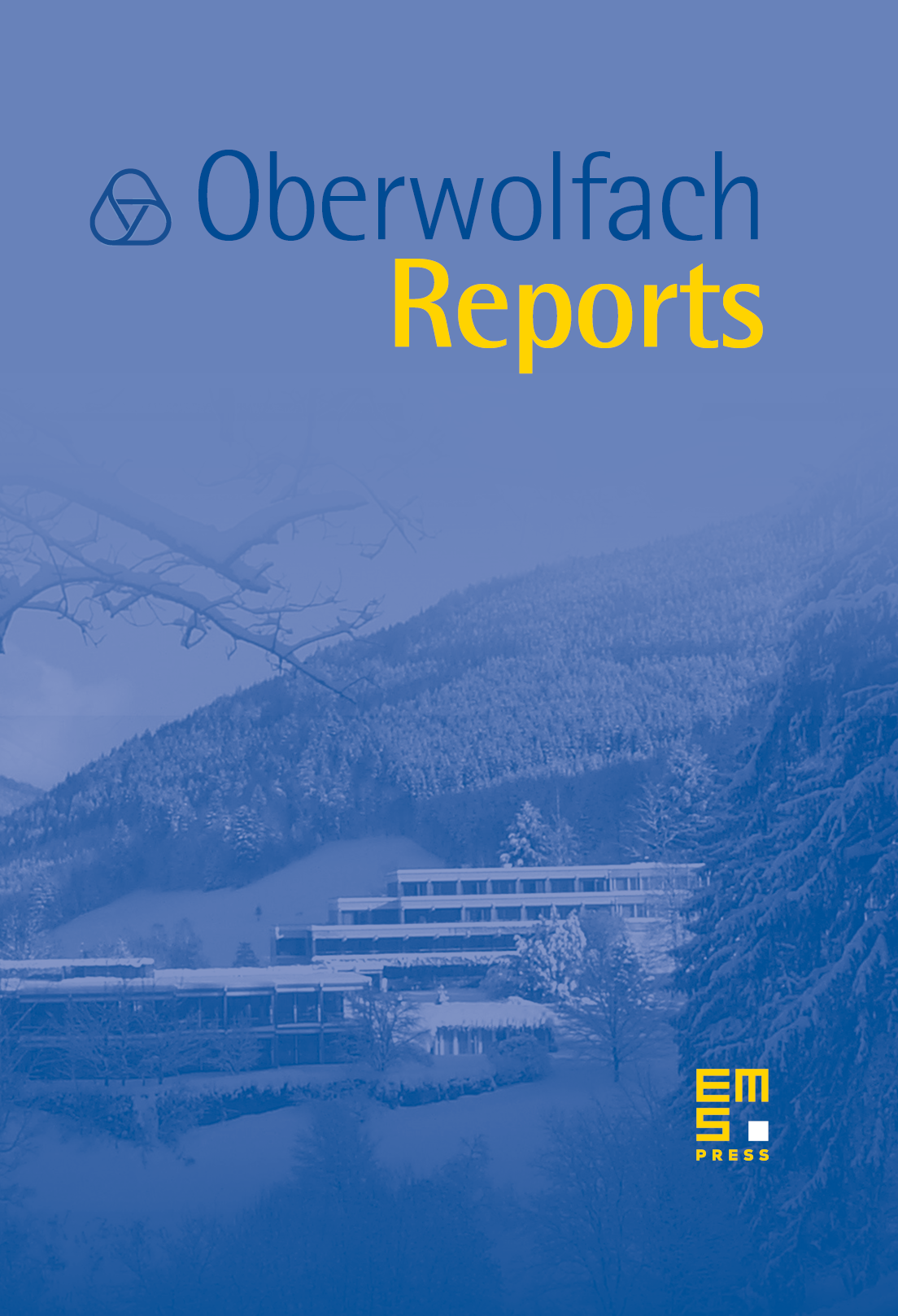Mathematical Methods in Tomography
Alfred K. Louis
Universität des Saarlandes, Saarbrücken, GermanyFrank Natterer
Universität Münster, GermanyEric Todd Quinto
Tufts University, Medford, United States

Abstract
Mathematically, the original problem of tomography consisted in reconstructing a function in from the set of integrals over straight lines. This problem was essentially solved by Radon in 1917, who gave an explicit formula for a function in terms of its line integrals, the famous Radon inversion formula. The numerical implementation of Radon's inversion formula is in no way obvious. Deep results from sampling theory are needed. Also, the problem of tomography is ill-posed, meaning that the result doesn't depend continuously on the data. Besides, in many cases of practical interest the solution is not uniquely determined. Problems like this were on the agenda of the first Oberwolfach conference in 1980, and they still played a role in the present conference.
In recent years, imaging must be seen in a much broader sense. The original straight line paradigm still plays a role, but other imaging techniques based on completely different principles are nowadays at the center of interest. In particular imaging techniques based on partial differential equations play an important role. This tendency is clearly reflected by the participants and the speakers of the present conference.
One of the promising recent developments is thermoacoustic tomography. This is a combination of microwave and acoustic imaging. The object is illuminated by microwaves. In this way tumors and other abnormalities are heated and generate pressure waves that are measured by acoustic transducers. Various mathematical, physical, numerical and applied aspects of thermoacoustic tomography are discussed in the talks of Kuchment, Agranovsky, Finch, Kunyansky, Palamodov and Patch.
Ritman's talk is dedicated to one of the classical problems in imaging: the trade off between exposure and resolution. Grünbaum's talk is an example of the application of techniques originally developed for medical imaging to completely different fields, namely the imaging on directed graphs, the underlying mathematics being Markov chains. Candès and Ramlau put sampling in tomography into the framework of wavelets, in particular the theory of sparseness. This makes it possible to reconstruct piecewise constant functions with a fraction of the data needed for general functions. Noo's and Clackdoyle's talks deal with an old problem in tomography, namely with incomplete data. Using elegant mathematics they are able so solve truncated projections and region of interest problems that were inaccessible to previous methods. Maaß applies methods of the modern theory of mathematical imaging, in particular non-convex optimization, to emission tomography. Nolan's talk is an example for imaging with the wave equation and the application of microlocal analysis to imaging. Katsevich's talk is on a problem in present day's clinical tomography, namely on true 3D reconstruction from cone beam projections. This topic is also covered in the talk of Louis, who presents a general theory of approximate inverses for problems of this type. Oeckl applies the highly successful technique of multi-resolution analysis to imaging problems from nondestructive testing. Sabatier applies a general inverse scattering transform to derive global solutions of linear pde's, and he analyzes the resolving power of electrical impedance tomography. The talks of Rieder, Faridani, Desbat and Izen are concerned with details of sampling and discretization for the filtered backprojection algorithm, which is the most important algorithm in clinical tomography. Mair's talk deals with the parameter choice in iterative algorithms for emission tomography. Another new and promising medical imaging technique is optical tomography, often referred to as molecular imaging. This topic is dealt with in the talks of Dorn, Schotland and Jiang, providing examples for imaging with the diffusion and the transport equation. The vectorial extension of tomography, with exciting applications in industry, is covered by Schuster.
Summing up, tomography is a lively branch of science with an inexhaustable supply of mathematical problems. Every new imaging modality poses new mathematical problems. The conference can be viewed as a snapshot of this lively development.
Cite this article
Alfred K. Louis, Frank Natterer, Eric Todd Quinto, Mathematical Methods in Tomography. Oberwolfach Rep. 3 (2006), no. 3, pp. 2059–2140
DOI 10.4171/OWR/2006/34